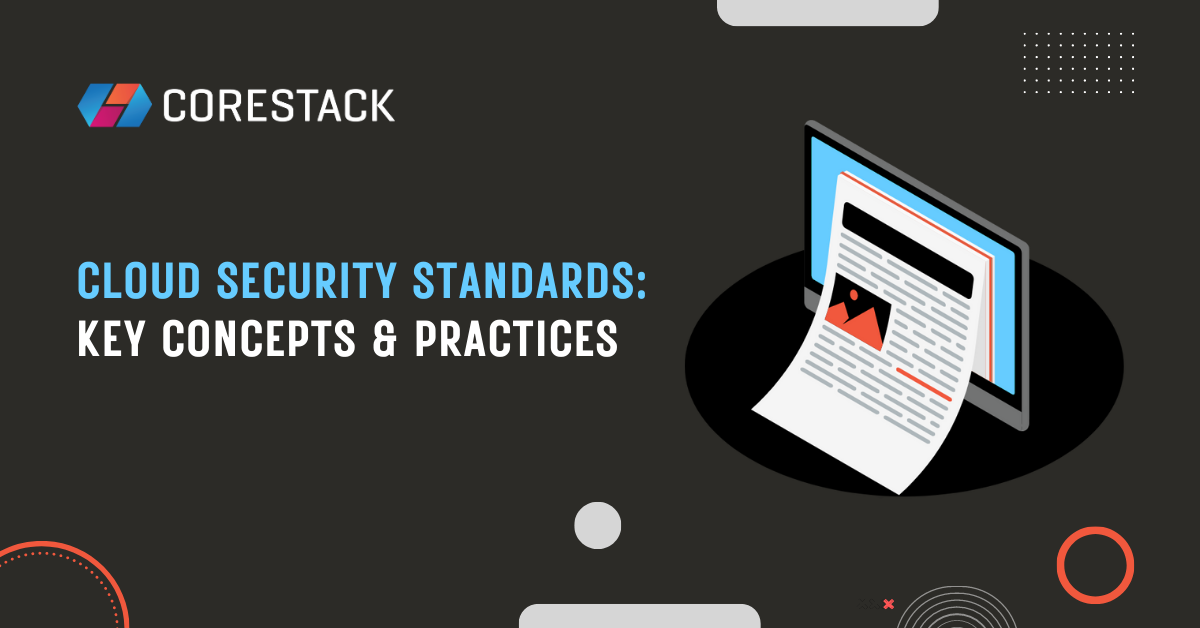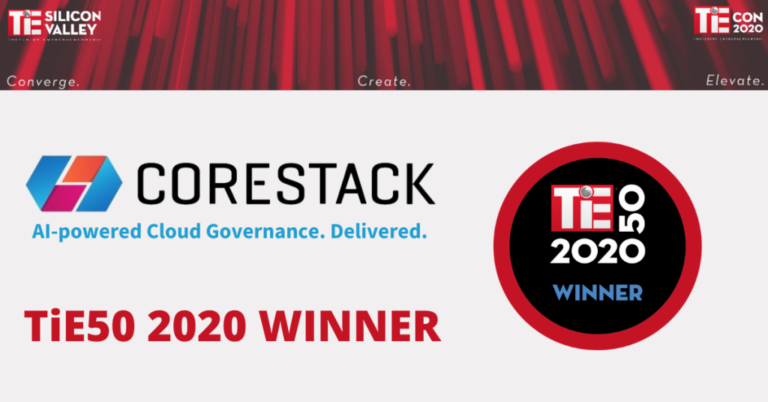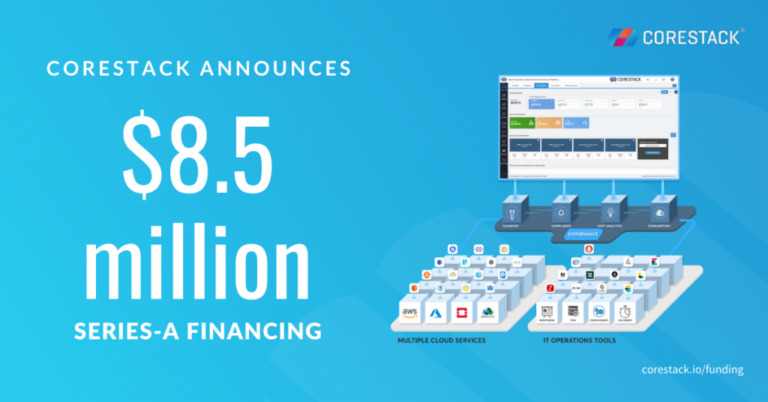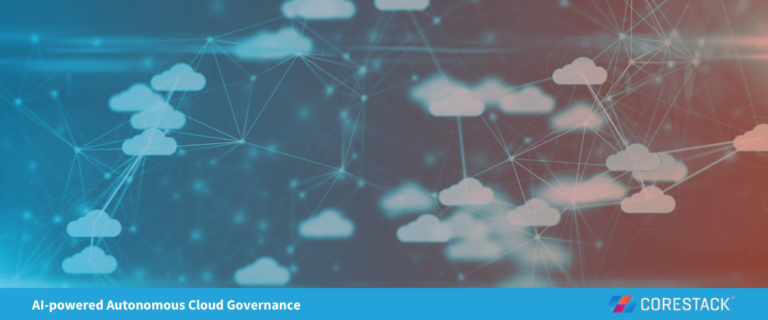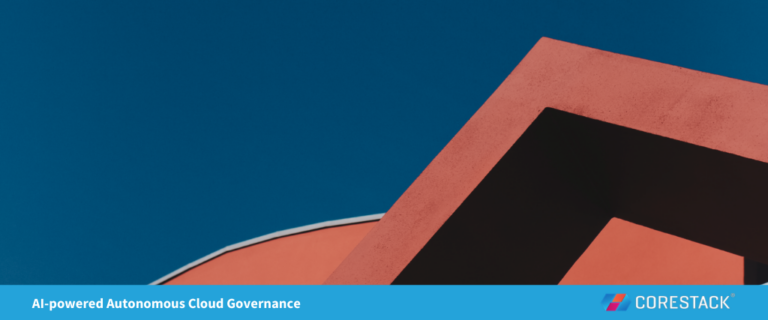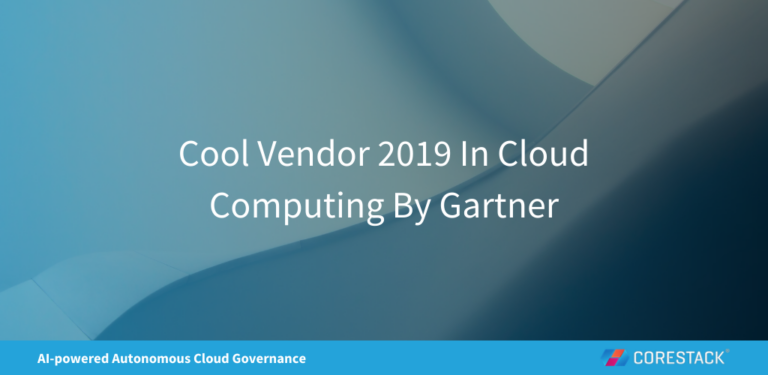Cloud Security Standards: Key Concepts & Practices
In a world where many organizations run their entire operation from the cloud, robust cloud security standards are critical. Cloud infrastructure also creates multiple unique compliance, security, and governance challenges. To mitigate risk, organizations must develop and implement security standards that account for the threats facing IT infrastructure in a cloud-first world.
Cloud security standards are the foundation for safeguarding data, digital assets, and intellectual property against malicious attacks, security threats, breaches, vulnerabilities, and unauthorized access. This article will explore cloud security standards in detail, including key components, best practices, and how robust standards can help ensure data confidentiality, integrity, and availability in the cloud.
Summary of key cloud security standards concepts
Several key components are necessary to address the security challenges of cloud infrastructure. The table below provides an overview of the key elements of cloud security standards and their role in mitigating risks and improving overall security posture.
| Concept | Description |
|---|---|
| Industry-recognized security standards | Provides an industry-recognized security framework for assessing and implementing security controls in a cloud environment. |
| Identity and access management (IAM) | Manages user identities, authentication, and access privileges to ensure access to cloud resources is authorized. |
| Threat protection and security management | Protects against vulnerabilities and detects security incidents across IT infrastructure. |
| Cloud Access Security Brokers (CASBs) | As an intermediary layer between users and cloud service providers, CASBs monitor user activities and enforce security policies. |
| Encryption tools | Essential tools for protecting sensitive data in the cloud against unauthorized access. |
Industry-recognized security standards
Industry-recognized security standards are essential for guiding organizations in assessing and implementing effective security and compliance controls in the cloud. These standards provide a framework based on industry best practices and practical experience managing security risks. Three of the most recognizable security standards are ISO 27001, PCI DSS, and HIPAA.
ISO 27001
ISO (International Organization for Standardization) 27001 is an internationally recognized standard that defines requirements for maintaining, implementing, and continuously improving information security systems in the cloud.
The standard provides one of the most comprehensive frameworks for any organization that wants to identify risks, implement security controls, and improve its security posture.
ISO 27001 provides a systematic approach to risk management in the cloud and offers a clear path to resolve, control, and identify vulnerabilities. It also improves data protection by ensuring sensitive information's integrity, confidentiality, and availability.
Addressing continuous improvement, risk management, and business resilience, ISO 27001 is considered a gold standard for cloud security and information security management.
PCI DSS
PCI DSS (Payment Card Industry Data Security Standard) is a security standard that applies to organizations that process or store cardholder data. The standard is designed to protect cardholder data by providing organizations with standards and requirements related to:
- Securing transactions
- Handling payments and payment information
- Storing cardholder data
- Transmitting cardholder data
It is essential for organizations that process credit cards and online payments to comply with PCI DSS.
HIPAA
HIPAA (Health Insurance Portability and Accountability Act) is a United States federal law that mandates security, compliance, and privacy standards for patient information. HIPAA outlines the requirements organizations must comply with to safeguard health information.
HIPAA standards apply to organizations — including cloud service providers — that handle protected healthcare information (ePHI). Compliance with HIPAA helps ensure the confidentiality, integrity, and availability of ePHI.
Benefits of using industry-recognized cloud security standards
When adopting industry-recognized security standards, organizations can benefit from:
- Enhanced security posture – Bolster overall security posture in the cloud
- Regulatory compliance – Avoid legal penalties
- Customer trust – Improve customer relationships
- Risk mitigation – Reduce the likelihood of data breaches and security incidents
- Continuous improvement – Continually improve security practices
Five essential cloud security standards best practices
When implementing security standards, best practices can help organizations ensure the integrity of their data and systems.
Here are five essential cloud security best practices to consider:
- Conduct comprehensive risk assessments to identify potential security risks.
- Implement appropriate security controls based on risk assessments.
- Monitor, review, and improve security controls based on audits.
- Identify and prioritize critical assets and systems.
- Establish an incident response plan and regular testing of plans.
Tools and services related to cloud security standards
Cloud security is a broad domain consisting of multiple tools, services, and practices. The sections below detail four essential components of a cloud security standards strategy.
Identity and access management (IAM)
In a cloud environment, IAM manages authentication, authorization, and identities. IAM can apply to users, groups, and service accounts. An effective IAM strategy can reduce the risk of data breaches and unauthorized system access.
Core elements of IAM
IAM's main features are:
- Authentication – IAM provides a mechanism to verify the identity of users when accessing cloud resources.
- Authorization – IAM can define granular access control policies to specific resources and ensure users only get access to resources that are relevant to their roles.
- Policy management – With IAM policies, administrators can define policies that control password complexity, timeouts, multi-factor authentication (MFA), and more.
IAM best practices
The four best practices below can help organizations develop cloud security standards that reduce user account-related risks.
- Create strong password policies – Enforcing password complexity, age, and strength indicators helps ensure user accounts are resistant to many common password attacks.
- Require MFA – MFA reduces the risk of a compromised password leading to a compromised account and unauthorized access.
- Define policies using role-based access control (RBAC) – RBAC allows organizations to manage access to resources based on predefined roles that ensure users are granted the appropriate access level.
- Leverage provisioning policies for common account lifecycle tasks – With user provisioning policies, administrators can streamline the provisioning processes that create, edit, and deactivate user accounts.
IAM integration
To achieve maximum security and streamline user management, IAM can be integrated with other cloud services and tools. For example, IAM can be integrated with directory services like AWS Directory Service and Azure Active Directory.
IAM integration creates a centralized identity management infrastructure that processes authentication seamlessly across multiple cloud services and platforms while enabling real-time monitoring of user activities.
IAM can also be integrated with privileged access management (PAM) solutions that manage privileged accounts and enforce strong controls over administrative access.
Threat protection and security management
Threat protection security standards help organizations detect, respond to, and mitigate security incidents in the cloud. It offers a proactive approach to safeguarding sensitive data, unauthorized access, and the overall integrity of cloud workloads.
An overview of the steps involved in incident response, threat protection, and security management.
Threat protection offers the following benefits:
- Malware detection – Threat protection tools such as signature scanning, behavior analysis, and machine learning help identify and detect malware within cloud workloads.
- Workload security – These tools secure workloads using real-time network traffic and system activity analysis.
- Compliance management – Full integration with compliance tools ensure industry-recognized security standards are maintained.
- Incident response and remediation – Using real-time alerts, dashboards, and reporting allows organizations to remediate security incidents fast without impacting the organization.
Threat protection and security management best practices
Key best practices for threat protection and management include:
- Apply updates regularly – Perform regular updates and patching of the underlying infrastructure, network devices, and systems.
- Segment workloads – Use network segmentation of production workloads from non-production workloads.
- Implement strong access control policies – Enforce policies such as strong passwords requirements and MFA.
- Train employees on security best practices – Employee training and awareness are critical in preventing phishing attacks and security breaches.
Cloud Access Security Brokers (CASBs)
CASBs act as secure intermediaries between organizations and cloud service providers. For example, a CASB may provide security and visibility into user activities for cloud services like Microsoft 365.
With CASBs, any action against sensitive data is recorded and monitored. In case of unauthorized access, immediate action can be triggered to start an automated workflow to mitigate the risk.
CASB features and options
Out of the box, CASBs provide several options that help mitigate and protect against multiple cloud security threats. Most CASB features can be grouped into one of two categories:
- Compliance – Using a CASB, organizations can meet compliance requirements like Data Loss Prevention (DLP), encryption, and access controls. CASBs can monitor and enforce policies related to data protection and access control.
- Protection – CASBs provide advanced threat protection mechanisms that detect data leakage and abnormal user behavior such as signing in from two continents simultaneously.
CASB deployment
Most CASB deployments are cloud-based and use API calls that allow visibility into and control over a cloud environment. A good example is Microsoft Defender for Cloud Apps (previously known as Cloud App Security).
Defender for Cloud Apps can be deployed by buying a subscription per user and enabled immediately with out-of-the-box policies and alerts.
CASB best practices
When developing cloud security standards related to CASBs consider these best practices:
- Maximize visibility – Gain complete visibility of activities related to users and data in the context of access and potential security gaps.
- Implement Data Loss Protection (DLP) – Leverage features that enforce DLP and protect sensitive data.
- Alert on and mitigate abnormal events – Detect abnormal activities related to user and data activity and trigger automated actions and alerts.
Encryption tools
Encryption is a fundamental aspect of security. For example, the TLS protocol is essential to securing network traffic between cloud services and clients. Similarly, encrypting databases is a vital aspect of defense-in-depth.
A cloud security standards strategy should include encryption standards that protect data during its storage and transit. Encryption tools are essential for effectively implementing security in the cloud and play a key role in getting encryption right.
Here are three examples of encryption tools that are common in modern cloud environments:
- Key Management System (KMS) – KMS tools help generate, store, rotate, and manage encryption keys using manual or automated processes.
- Transport Data Encryption (TDE) – TDE tools ensure that all data written to disk on a storage device is encrypted.
- Database encryption tools – These tools encrypt data within databases and provide an extra level of security when combined with other tools.
Encryption types
The two high-level types of encryption are:
- Encryption at rest – Encryption at rest focuses on protecting data when it is stored in any storage device, system, database, or backup media. At-rest encryption ensures data on any media is effectively inaccessible without decryption keys.
- Encryption in transit – Encryption in transit secures data when it transfers between endpoints and across networks. This type of encryption ensures data is safe from being intercepted or modified during transmission.
Encryption tool best practices
These four encryption tool best practices can help organizations define cloud security standards that improve their security posture across the IT infrastructure:
- Use strong and unique encryption keys – The strength of any encryption implementation depends largely on the strength and integrity of encryption keys. Strong and unique encryption keys help ensure that only authorized entities can decrypt data.
- Rotate encryption keys on a regular schedule – Regular key rotation limits the risk a compromised key poses. With a key rotation schedule, attackers have a limited window to exploit a compromised key.
- Monitor and audit encryption operations – Visibility into encryption operations can help organizations improve governance and detect suspicious behavior, such as multiple decryption attempts and unexpected key changes.
- Update and patch encryption tools – Encryption tools can have security issues like OpenSSL’s notorious Heartbleed bug and the more recent CVE-2022-3602 and CVE-2022-3786 vulnerabilities. Regular patching helps mitigate the risk of a tool vulnerability leading to a breach.
|
Platform
|
Provisioning Automation |
Security Management |
Cost Management |
Regulatory Compliance |
Powered by Artificial Intelligence |
Native Hybrid Cloud Support
|
|---|---|---|---|---|---|---|
|
Azure Native Tools |
✔
|
✔
|
✔
|
|||
|
CoreStack
|
✔
|
✔
|
✔
|
✔
|
✔
|
✔
|
Conclusion
Establishing a secure cloud environment based on strong cloud security standards is crucial for any organization with cloud infrastructure. A robust set of cloud security standards help organizations remain compliant, enhance overall security posture, and improve governance and visibility.
Yet, is your enterprise truly prepared to meet these ever-evolving cloud security challenges?
With its NextGen multi-cloud governance platform, CoreStack streamlines cloud management by offering real-time security monitoring, threat identification, and continuous compliance. By strengthening security posture and governance, the platform helps modern enterprises navigate their digital transformation journey and adopt the cloud with confidence.

